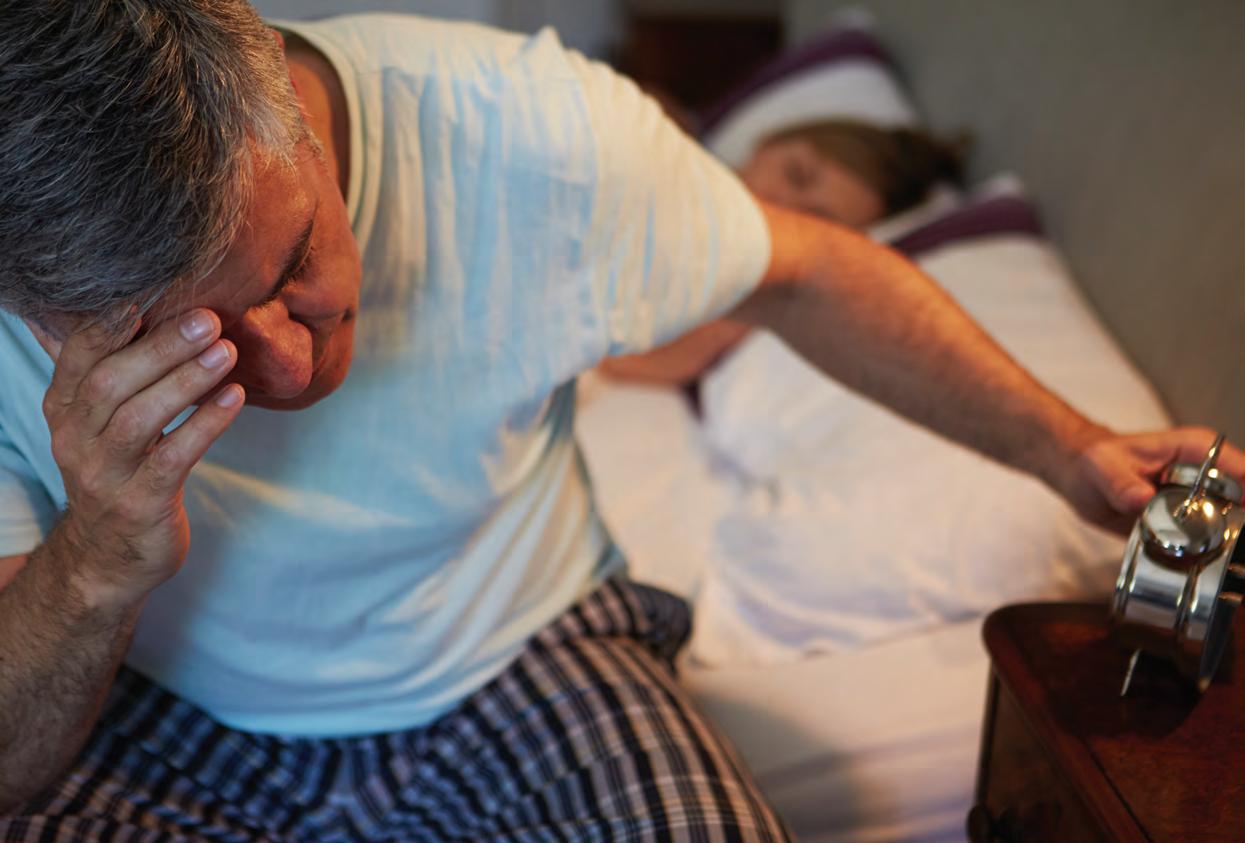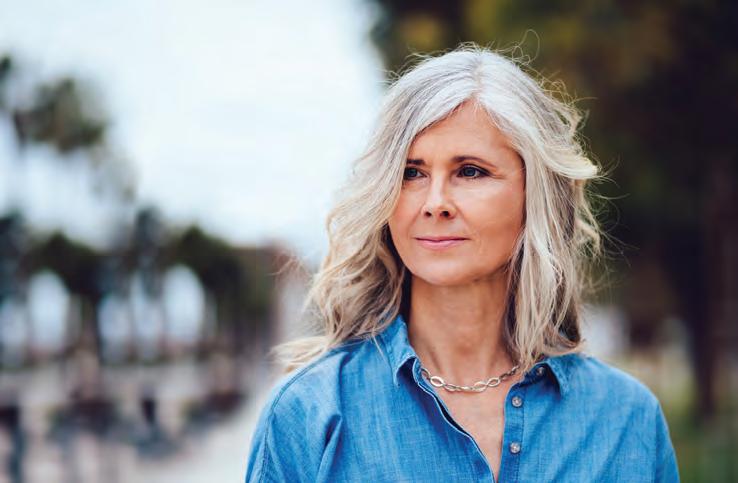
6 minute read
G eneral relativity
General Relativity
by David Fletcher
It was 100 years ago in 1919, that Albert Einstein got divorced and then became a worldwide celebrity. Happily, there was no correlation between these two events, but let’s look at what caused Einstein’s sudden rise to fame. Our Moon is of such a size and orbital distance that when it passes perfectly between us and the Sun it blocks out almost all visible sunlight and the phenomenon is known as a Total Solar Eclipse. This kind of event is not too frequent as the Moon orbits the Earth at a slightly more tilted angle than the Earth’s orbit around the Sun.
You may recall in August 2017 a certain president, against all recommendations, decided to look directly at an eclipse as the Moon traversed North America. Although it is not advisable to gaze upon a solar eclipse without proper eye protection, it is a perfect opportunity for astronomers to observe objects that are normally overwhelmed by our Sun’s intensity. In May 1919 two expeditions took advantage of an eclipse to measure whether or not light from distant stars a ppeared to bend as it passed close to our Sun on its path to Earth. The confirmation that this light did bend was the second proof that Einstein’s new theory of General Relativity was holding fast. The general public learnt the name, Albert Einstein, as newspapers in London and New York exclaimed, “Revolution in Science” and “Einstein Theory Triumphs.” [1]
Whilst working in Switzerland as a patent clerk, Einstein had developed and published many pivotal physics theories. Amongst these was a theory on the photoelectric effect (for which he won the Nobel Prize and which also was an important milestone in the burgeoning theory of Quantum Mechanics) and of course, his theory on Special Relativity, which soon gave rise to an additional thought where Einstein postulated that mass and energy were equivalent (e=mc2). All these works were enough to give Einstein ‘proper’ physics jobs in German Universities where he was allowed to develop a totally new theory of gravity known as General Relativity (GR). [1]
Notoriously difficult to explain, GR is usually given just a passing paragraph in non-specific physics texts, which are often coupled with a picture of a ball sitting on a 2-D line graph bending around it. Culminating in an equation (known as the Einstein Equation) that involves tensor mathematics, differential geometry, spacetime metrics and a cosmological constant, it is not surprising that introductions to the topic invariably get a little poetic. In that vein there is perhaps none more succinct a description of GR than given by the physicist John Wheeler, “Spacetime tells matter how to move; matter tells spacetime how to curve.” [2]
One hundred years on from the initial tests of GR there are many more confirmations that Einstein’s theory of curvy spacetime, due to the stuff in it, is the best model we have to explain gravity and its effects. The Global Positioning 1919 excerpts from the New York Times

72-year-old Albert Einstein – photograph by Arthur Sasse https://allthatsinteresting.com/ albert-einstein-tongue-photo
System would quickly become wildly inaccurate were it not for corrections governed by GR. [3]
But in spite of its success, no one has yet reconciled gravity with the incredibly successful theory of Quantum Mechanics. With modern scientists exploring frontier areas, such as Loop Quantum Gravity and String Theory, perhaps one day soon we will see, “Revolution in Science,” declared again. [4]
REFERENCES
[1] Kumar 2008, Quantum, Icon Books
[2] Wheeler 1998, Geons, Black Holes and Quantum Foam, W.W. Norton and Company
[3] Zee 2013, Einstein Gravity in a Nutshell, Princeton University Press
[4] https://www.preposterousuniverse. com/podcast/2018/10/15/episode-18- clifford-johnson-on-whats-so-greatabout-superstring-theory/ (website visited 21-12-2018), Sean Carroll
Why exercise really is the Best Medicine
They say laughter is the best medicine, and we agree it certainly does help, but recent studies have proven that exercise really is the best medicine – especially in the fight against cancer.
Local Cancer Rehab Occupational Therapist (OT) and Lymphoedema Therapist, Kate Perkins, knows this to be true, as she helps women diagnosed with breast cancer to improve their quality of life and assist recovery through individualised exercise rehab programs.
Kate, who is a former competitive cyclist and triathlete and passionate surfer, said she draws on her lifelong love of sport, health and fitness to help her patients return to doing the things they love best following their cancer treatment.
“As a Certified Pinc & Steel Cancer Rehab OT, my role is to help people regain and maintain movement, strength, and endurance before, during and after cancer treatment, enabling them to return to regular activities as soon as possible,” says Kate.
Breast cancer survivor and athlete, Margaret Beardslee says exercise was an essential part of her cancer recovery.
“Exercise has always helped me have good karma. It helped me feel normal through treatment for breast cancer. I needed to feel normal to cope and keep a positive attitude,” explains Margaret.
And the experts agree.
In 2018, the Clinical Oncology Society of Australia (COSA) advocated for ‘exercise to be standard practice in cancer care and viewed as an adjuvant therapy to counteract the adverse effects of cancer and its treatments.’

COSA also recommends individual patient safety should be assessed by a health professional with knowledge of cancer, prior to exercise commencement.
Founder & Director, Pinc & Steel International, Lou James, says medical treatment may save lives, but cancer rehabilitation gives people their lives back.
“It is common for people to reduce their level of physical activity after a cancer diagnosis, and getting the appropriate support and encouragement from a cancer rehabilitation therapist during and after treatment is essential to help you return to doing the things you love,’’ says Lou.
Kate says the role of a Cancer Rehab Therapist is to understand the needs of each individual patient, offer a safe rehabilitation environment and help patients understand what they can do, instead of being frustrated by what they can’t. “Showing someone what they can do gives them confidence and hope they can return to their normal daily activities. I’ve also seen women become stronger during and after their treatment than when they were first diagnosed,” adds Kate.
“This is why I love what I do and know that exercise really is the best medicine.”
Founder of Lymphatic Solutions, Kate Perkins, is a qualified Occupational Therapist (OT) and Certified Cancer Rehab Occupational Therapist who specialises in breast cancer rehabilitation, including the early detection and early intervention of breast cancer related lymphoedema. Phone 0425 554 994 for a consultation.

www.holidayheaven4hounds.com.au Do You Love Dogs? DOG MINDERS REQUIRED Care for a dog in your own home from time to time and be REWARDED $$ Security, wagging tail, companionship and plenty of licks! Call Bronwyn PH: 0413 362 481
Breast Cancer Rehabilitation

Kate Perkins, B.App.Sci (Occupational Therapy) helps women who have undergone surgery and related treatment for breast cancer gain recovery of strength, movement, and energy. » Monitoring pre & post breast cancer treatment » Assessment and management of Lymphoedema » Strength After Breast Cancer prescribed exercise program » Scar tissue management – surgical, adhesive scar tissue, cording » Low Level Laser Therapy » Lymph and Scar Taping techniques » Manual Lymph Drainage massage » Compression garment prescription » Patient Education » EPC and Health Fund
Claimable Call Kate on 0425 554 994 to book an appointment.
@lymphaticsolutionsau E: info@lymphaticsolutions.com.au www.lymphaticsolutions.com.au
AVOCA NATUROPATH
Nutrition and natural medicine for wellness and healthy ageing
Diana Arundell
UNIVERSITY QUALIFIED 118 Avoca Dr, Kincumber
Phone 0410 465 900 www.avocanaturopath.com.au






